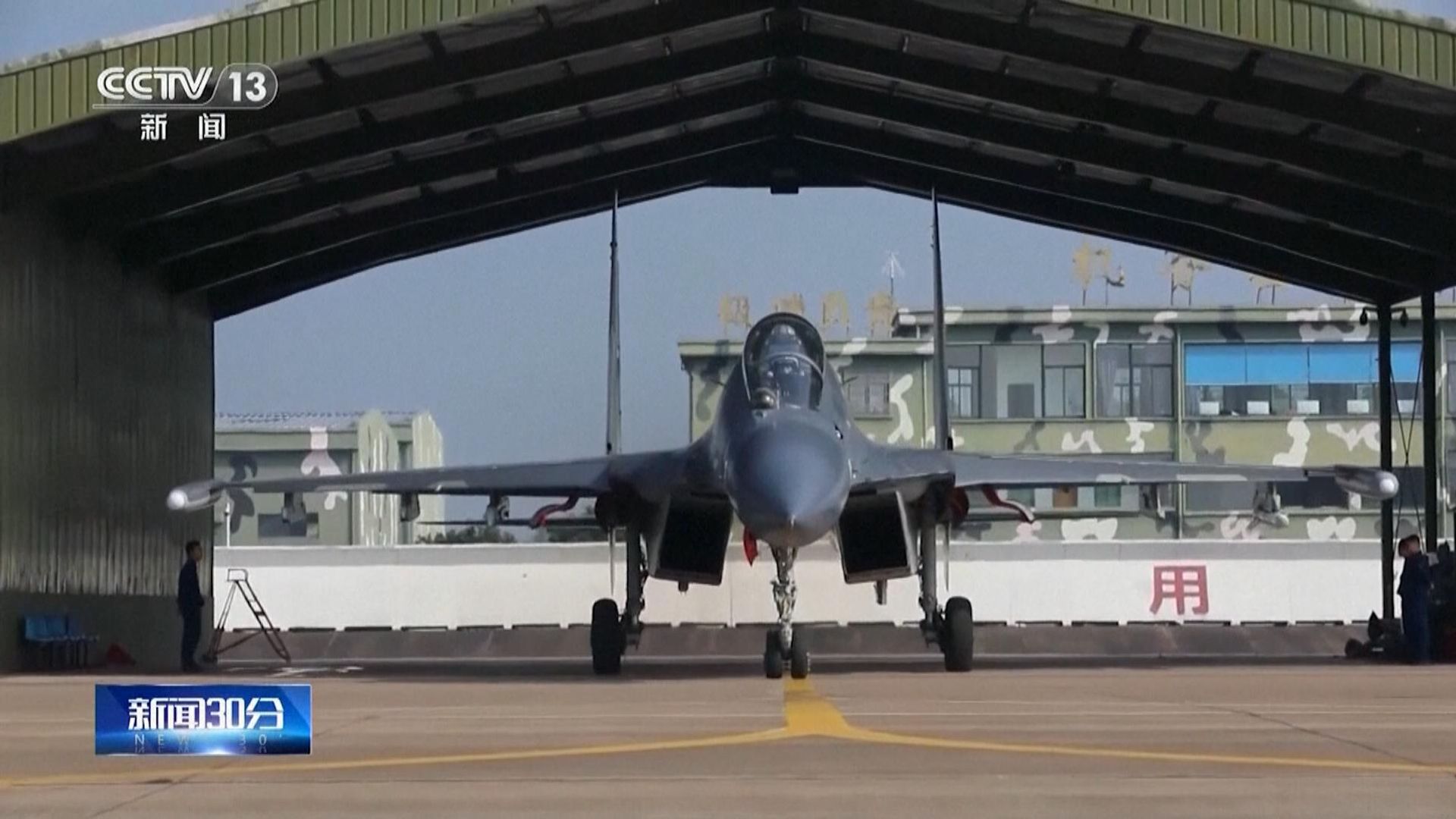China has tested its ability to “seize power” by launching mock missile strikes on Taiwan and pretending to bomb foreign assets.
The two-day tests were staged to punish Taiwan’s new president, Lai Ching-te, who China has previously denounced as being a “dangerous separatist”.
China dispatched fighter jets carrying live missiles along with bombers on Friday, state broadcaster CCTV said.
The bombers set up several attack formations in waters east of Taiwan – which China views as its own territory. Mock attacks were carried out in coordination with naval vessels, CCTV added.
Read more:
Taiwan’s new president tells China to ‘stop’ making threats
China anger as American warship sails through Taiwan Strait
Asia correspondent
It’s just days after Taiwan President Lai Ching-te was sworn into office in Taipei and China is making a big statement – with these so-called “punishment” drills.
The island’s new leader is loathed by Beijing even more than his predecessor, describing Mr Lai as a “dangerous separatist”.
Beijing took great offence at President Lai using the word China to describe China. It believes that revealed his real thinking – that they’re two separate countries.
Now Beijing has carried out numerous blockades before of course, but this time it is casting it as a dress rehearsal for an “invasion”, focused on encircling the island and simulating a full-scale attack.
It says it wants to test its ability to “seize” control over Taiwan. It’s more than simply rhetorical bluster.
It’s an important inflection point and a significant test for Taiwan’s ruling party, which has championed democracy in the face of growing threats from its authoritarian neighbour.
The drills are taking place in the Taiwan Strait, which separates the self-ruling island from mainland China.
They’re not only in the north, south and east of Taiwan, but also the outlying islands of Kinmen, Dongyin, Wuqiu and Matsu.
That expansion, coupled with China’s more muscular language has prompted analysts to warn it could be a sign of bigger things to come.
The name “Joint Sword 2024-A” at the very least suggests more may be afoot.
And there’s global optics and dynamics at play. The recent meeting with Putin was a reminder Xi Jinping wants to create a new world order, away from the US and Taiwan has always been in its sights.
But – and it’s a big but – China is facing a huge economic challenge at home and any war would not only be expensive but experts say, would also take many months to prepare for.
These drills currently look like a warning shot. The real “punishment” may be yet to come.
President Lai has attracted the ire of Beijing over pro-independence comments made earlier in his career.
While the president has since been more cautious about repeating similar remarks, his claim about China having to “face up to the fact that the Republic of Taiwan exists” during his inauguration speech earlier this week was enough to anger Beijing.
‘Seize power’
The Eastern Theatre Command of the People’s Liberation Army said the exercises, dubbed “Joint Sword – 2024A”, were to “test the ability to jointly seize power, launch joint attacks and occupy key areas”.
“This action is completely reasonable, legal, and necessary to combat the arrogance of ‘Taiwan independence’ and deter the interference and intervention of external forces,” said Wu Qian, a spokesperson of China’s defence ministry.
Keep up with all the latest news from the UK and around the world by following Sky News
Taiwan’s armed forces have mobilised to monitor and shadow Chinese forces, with the island’s defence ministry on Friday publishing pictures of F-16s, armed with live missiles, patrolling the skies.
A senior Taiwan security official told Reuters several Chinese bombers conducted mock attacks on foreign vessels near the eastern end of the Bashi Channel, which separates Taiwan from the Philippines, practicing how to seize “total control” of areas west of the so-called first island chain.
Be the first to get Breaking News
Install the Sky News app for free
The first island chain refers to the area that runs from Japan through Taiwan, the Philippines and on to Borneo, enclosing China’s coastal seas.
The official, who spoke on condition of anonymity due to the sensitivity of the topic, said several Chinese coastguard boats also conducted “harassment” drills off Taiwan’s east coast, including mock inspections of civilian ships.
The US Navy 7th Fleet said it was paying attention to “all of the activities” in the Indo-Pacific and takes “very seriously” the responsibility to deter aggression in the region.
‘No concessions’
While the US formally recognises Beijing, it is bound by law to provide Taiwan with the means to defend itself and is the island’s most important international backer.
Speaking in Taipei, Taiwan foreign minister Lin Chia-lung said the island would not succumb to pressure.
“We will not make any concessions because of this Chinese military exercise, because it concerns the development of
democracy in Taiwan,” he said.





